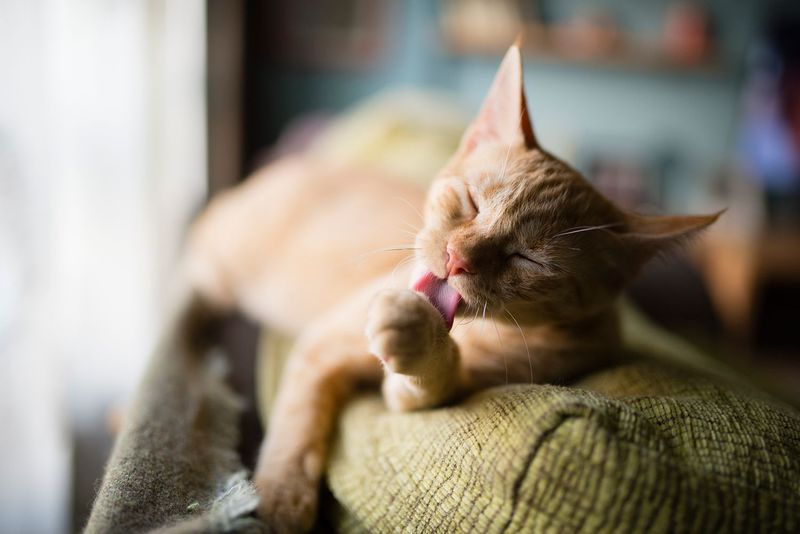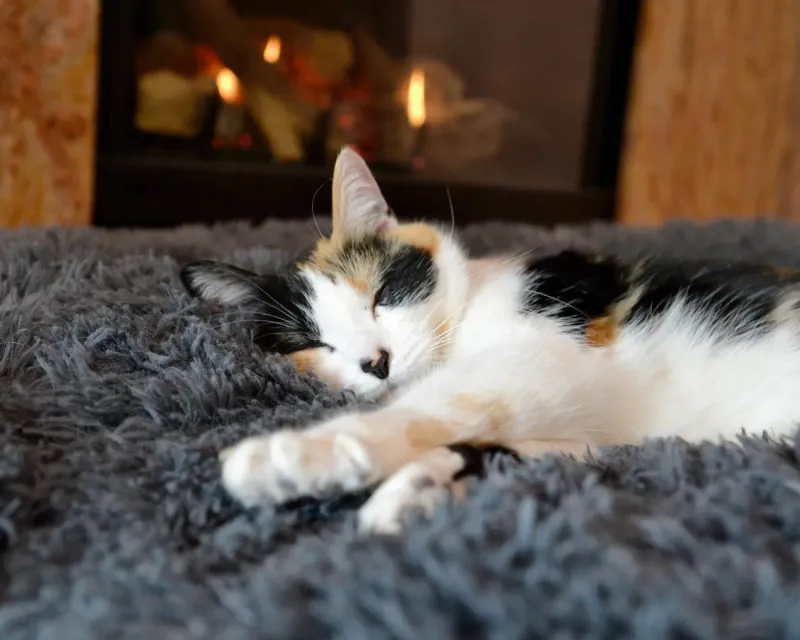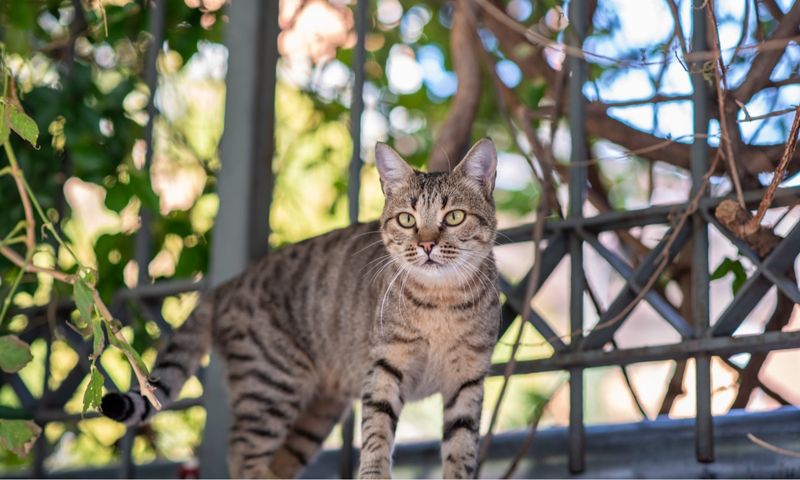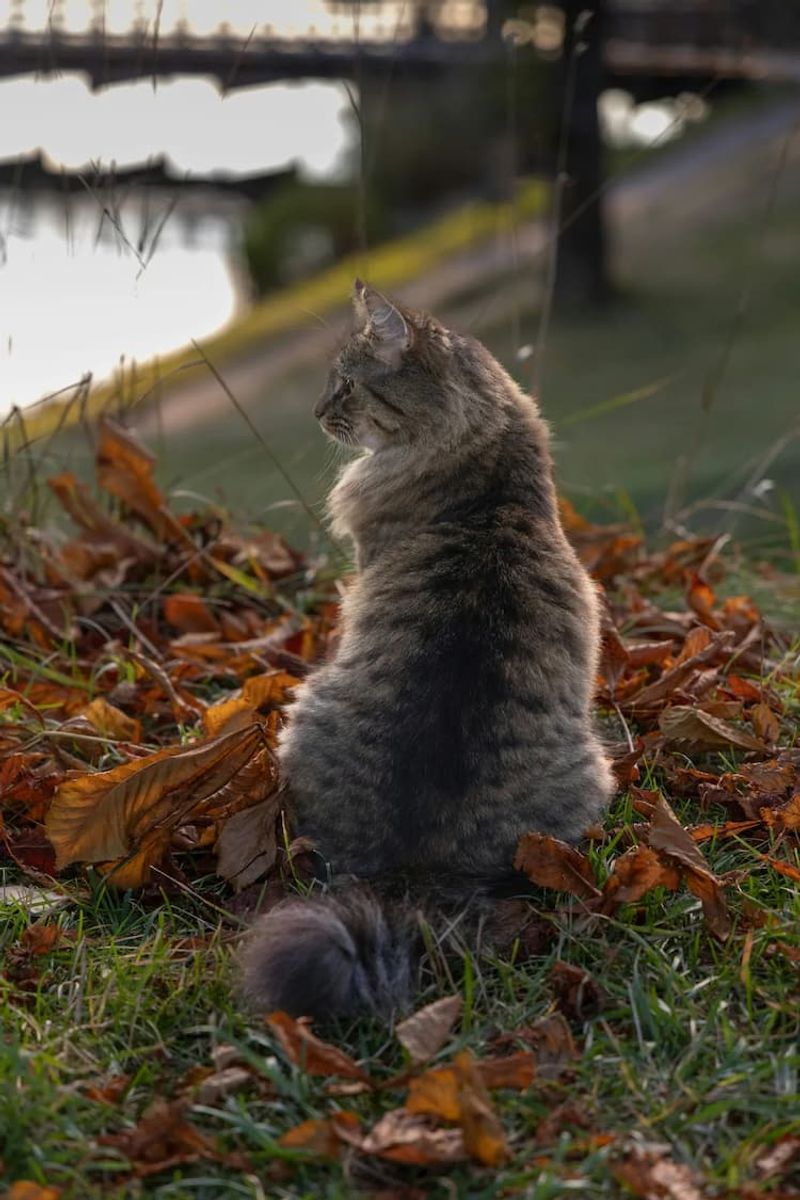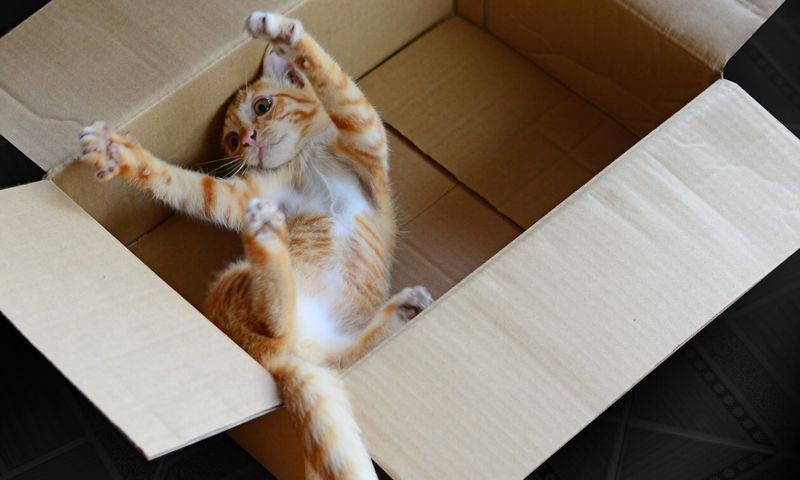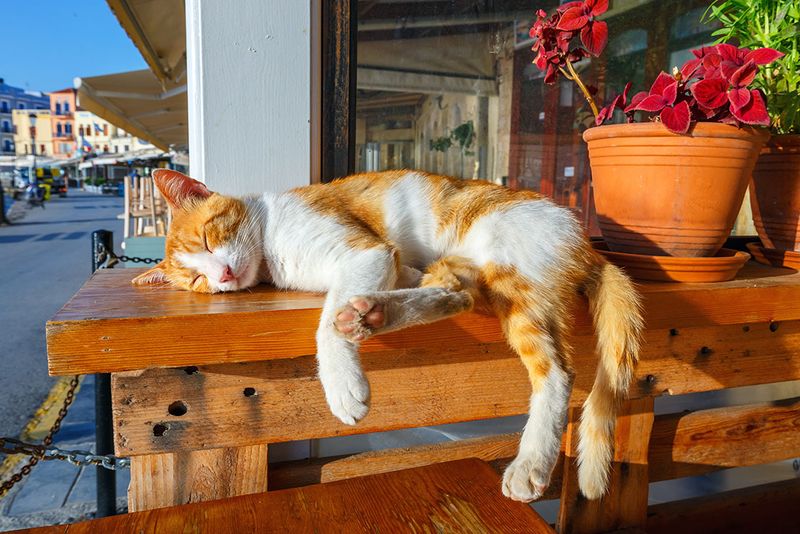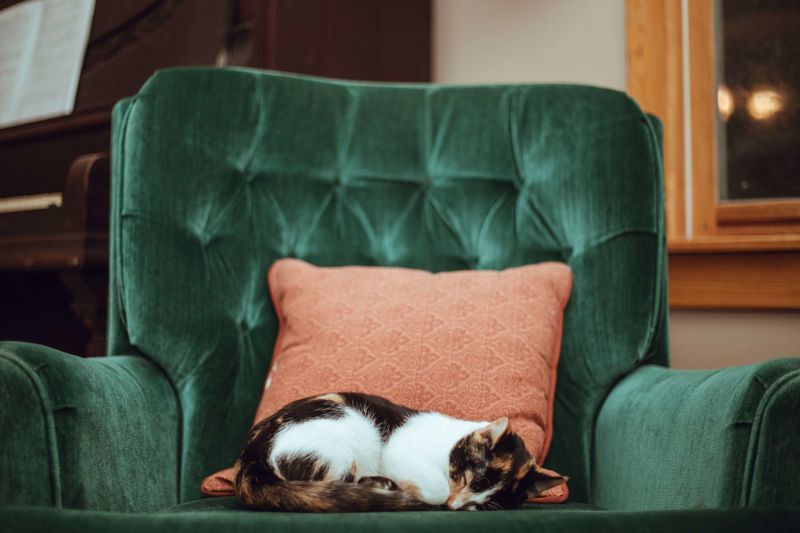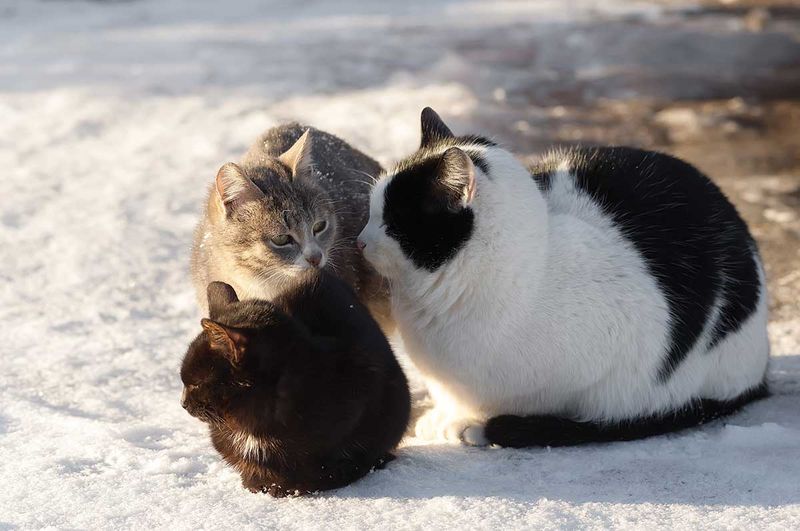📖 Table of Content:
- 1. Winter Coat Growth
- 2. Summer Shedding
- 3. Springtime Energy Boost
- 4. Autumn Appetite Increase
- 5. Seeking Warmth in Winter
- 6. Increased Grooming in Spring
- 7. Winter Napping Habits
- 8. Springtime Exploration
- 9. Summer Cooling Strategies
- 10. Fall Coat Preparation
- 11. Winter Playfulness Indoors
- 12. Autumn Sunbathing
- 13. Springtime Vocalization
- 14. Summer Sleep Patterns
- 15. Fall Foraging Instincts
- 16. Winter Socializing
Cats are masters of adaptation, effortlessly adjusting to the shifts in seasons. As the weather changes, so do their behaviors, providing insight into their instinctual responses. These remarkable creatures showcase an innate ability to thrive in diverse environments, no matter the season.
From their coat transformations to changes in activity levels, cats’ seasonal responses reveal their resilience. Their behavior often mirrors the environment, adapting to ensure comfort and survival. Whether it’s curling up during the winter or basking in the warmth of summer, cats know how to make the most of each season.
Understanding how cats adapt to these changes deepens the bond between pets and their owners. Observing these shifts highlights the fascinating ways cats navigate their world. Their reactions to seasonal transitions make them truly captivating companions all year long.
1. Winter Coat Growth
In preparation for winter, cats naturally grow a thicker coat to shield themselves from the cold. This process occurs gradually, with their fur becoming more dense and insulating over time.
This process is as much about comfort as it is about survival. Cats use their lush winter coats to conserve body heat, ensuring they can thrive even when the mercury drops.
Owners might notice their feline friend shedding less during colder months, a sign of their body preparing for the cold. An ample coat is a cat’s best defense against winter’s bite.
2. Summer Shedding
As temperatures rise with the arrival of summer, cats shed their winter coats, replacing them with lighter fur to stay cooler. This natural shedding is a response to the warmer climate.
The process helps them regulate body temperature, ensuring they remain comfortable during hot days. Cats often groom more during this time, aiding in the shedding process.
Regular brushing can assist in managing excess fur and prevent matting, keeping your cat healthy and happy. Summer shedding is a clear indicator of a cat’s adaptability to seasonal changes.
3. Springtime Energy Boost
Spring brings a burst of energy to cats, often observed as increased playfulness. The longer daylight hours and warmer temperatures invigorate their spirits.
This seasonal change can lead to more playful antics and a desire to explore. It’s an excellent time for cat owners to engage in interactive play, using toys that stimulate both body and mind.
Spring is a season of renewal, and this is clearly reflected in a cat’s rejuvenated energy levels. Providing opportunities for exploration and play will ensure their happiness.
4. Autumn Appetite Increase
As autumn approaches, cats often experience an increase in appetite. This change is driven by their natural instinct to prepare for the colder months ahead.
They might consume more calories to build up energy reserves, ensuring they stay warm and healthy when winter arrives. Owners may observe their cats being more persistent in asking for meals.
Providing balanced nutrition during this time is crucial. This seasonal appetite shift is a fascinating insight into their survival instincts, reflecting how closely they are attuned to environmental changes.
5. Seeking Warmth in Winter
In winter, cats are often found seeking warmth, gravitating towards heat sources. Whether it’s a sunny windowsill or a cozy spot near the heater, warmth becomes their priority.
This behavior is a clear indication of their need for comfort during the chilly months. Providing warm bedding or heated cat mats can enhance their comfort.
Observing your cat’s preference for warm spots offers a charming insight into their natural instincts. It’s a reminder of their wild ancestry, where staying warm was vital for survival.
6. Increased Grooming in Spring
With the arrival of spring, cats tend to groom more frequently. This behavior is not just about cleanliness but also about shedding their winter coat.
Increased grooming helps remove loose fur and keeps their skin healthy. It’s a natural process that reflects their adaptation to the changing seasons.
Owners can aid this process by providing regular brushing sessions, which can also strengthen the bond between the cat and the owner. Spring grooming is a vital aspect of their seasonal transition, ensuring they are ready for the warmer days ahead.
7. Winter Napping Habits
During winter, cats often indulge in longer naps, conserving energy for the colder days. This behavior is deeply rooted in their survival instincts.
By resting more, they reduce energy expenditure, allowing them to maintain body warmth. Winter naps are not just about sleep but also about staying warm and safe.
Providing warm, comfortable sleeping areas can enhance their napping experience. These habits offer a glimpse into their ancestral past, where conserving energy was key to surviving harsh winters.
8. Springtime Exploration
With spring’s arrival, cats display a renewed curiosity, eager to explore their surroundings. This behavior is fueled by the sights and sounds of a world waking up.
Longer days and pleasant weather entice them to venture outdoors more frequently. Owners can encourage this natural curiosity by providing safe outdoor spaces or interactive play indoors.
Spring exploration is a joyful expression of their inquisitive nature, signaling the start of a new season. Ensuring a safe environment will allow them to fully enjoy this vibrant time.
9. Summer Cooling Strategies
Cats employ several strategies to stay cool during the sweltering summer months. Seeking shade and staying hydrated are their primary methods.
They might also be observed lounging on cool surfaces, such as tiles or shaded areas. This behavior helps regulate their body temperature effectively.
Owners can support these efforts by providing fresh water and shaded rest areas. Understanding and facilitating these cooling strategies is essential for their summer comfort, preventing overheating and ensuring their well-being.
10. Fall Coat Preparation
As fall approaches, cats begin to grow thicker coats in preparation for winter. This change is gradual but essential for their comfort in cold weather.
The development of a thicker coat signifies their body’s natural response to decreasing temperatures. Owners might notice a subtle increase in fur density.
Supporting this transition with quality nutrition ensures their coat remains healthy and effective. Observing this seasonal preparation showcases their innate ability to adapt to environmental changes, equipping them for the colder days ahead.
11. Winter Playfulness Indoors
Despite the cold, winter can be a time of indoor playfulness for cats. While outdoor adventures might be limited, indoor activities keep them entertained.
Owners can encourage playful behavior with toys and interactive games, ensuring their mental and physical stimulation. The warmth of the indoors provides a safe, comfortable environment for play.
Winter playfulness highlights their adaptability, showcasing that even when nature restricts them, they find joy and amusement. Providing ample indoor entertainment ensures their happiness through the cold months.
12. Autumn Sunbathing
Autumn offers ample opportunity for cats to bask in the gentle sun. This behavior is a delightful way to soak up warmth as temperatures cool.
Sunbathing helps them maintain body heat and provides a sense of comfort during transitional weather. Owners might spot their cats lounging in sunlit areas more frequently.
Ensuring access to sunny spots indoors enhances their sunbathing experience. This seasonal habit is a clear reflection of their natural instincts, seeking warmth and relaxation in the changing climate.
13. Springtime Vocalization
As the days warm up in spring, cats become more vocal, reflecting their heightened curiosity and energy levels. This season often sparks more communication with their humans and environment.
Owners may notice a rise in meowing and other vocalizations, signaling their need for attention or interaction. These sounds can be a charming way to connect with your feline friend.
Engaging in conversations and responding to their cues strengthens the bond between owner and cat. Spring vocalization is a delightful expression of their lively spirits, enhancing their connection to the world around them.
14. Summer Sleep Patterns
In summer, cats often adjust their sleep patterns, seeking cooler spots for rest. The heat influences them to nap during the hottest parts of the day.
By finding shaded or cool resting areas, they effectively manage their comfort. Owners should ensure these areas are accessible, providing relief from the heat.
Understanding and accommodating their summer sleep habits is crucial. It highlights their adaptability and instinctive measures to cope with high temperatures, ensuring they remain cool and comfortable.
15. Fall Foraging Instincts
As fall settles in, some cats exhibit foraging instincts, exploring their environment with curiosity. This behavior is driven by their ancestral roots, preparing for leaner times.
Owners may notice their cats sniffing around more, investigating every nook and cranny. Encouraging this behavior with safe exploration areas enriches their lives.
Fall foraging is a fascinating aspect of their behavior, showcasing their connection to nature. Providing opportunities for exploration keeps their minds engaged and satisfied during this transitional season.
16. Winter Socializing
When the cold sets in, cats tend to huddle with fellow cats or humans, searching for warmth. This natural behavior is all about finding comfort during the chillier months.
Cats may become more affectionate, enjoying the closeness and shared body heat. Owners might notice their cats being more social and seeking attention.
Facilitating social interactions enhances their well-being during the cold months. Winter socializing is a heartwarming reminder of their need for connection, offering warmth both physically and emotionally.






